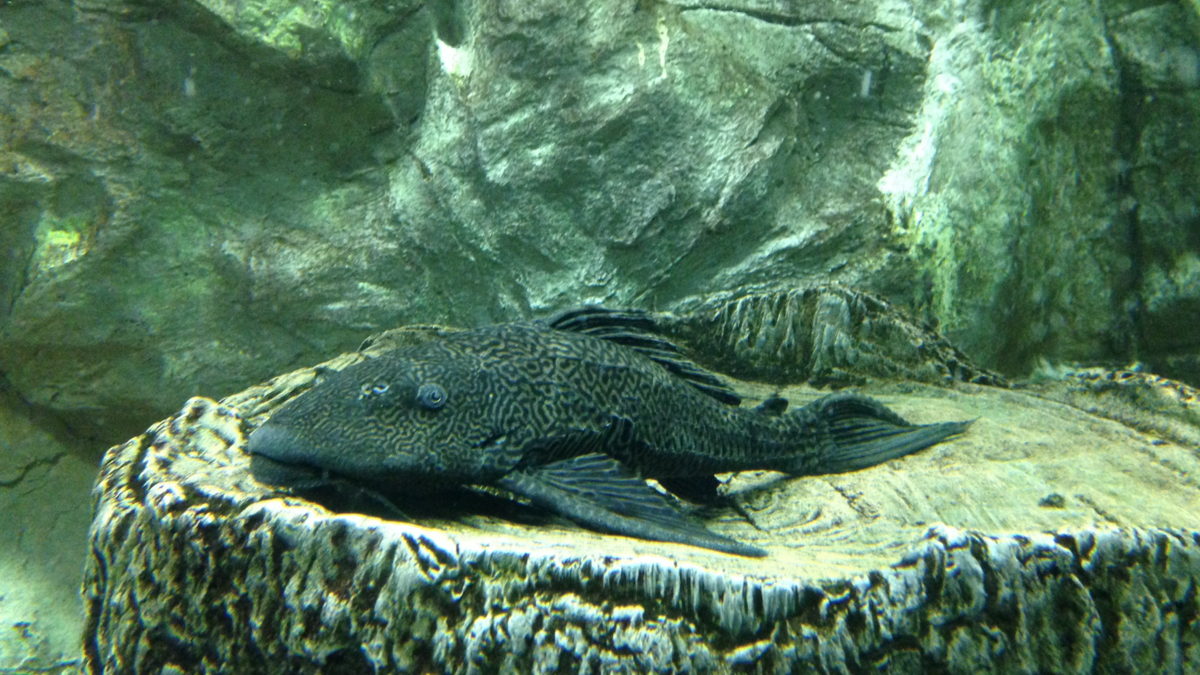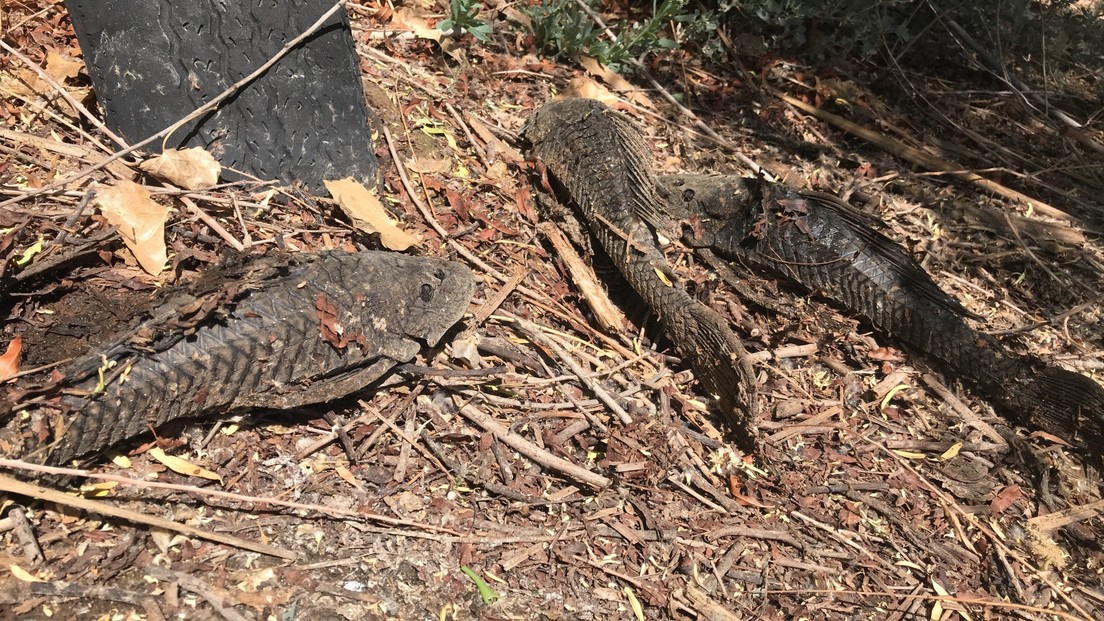One day last April, Arizona State University biologist Matt Chew was leading his Novel Ecosystems class along the banks of the Gila River at the Tres Rios Wetlands.
The 700-acre restoration project where cattails wave in the breeze and greenery crowds the banks is home to more than 150 species of birds and animals. It’s also downstream from a wastewater treatment plant. According to Chew, the water is full of Prozac, birth control and acetaminophen and the banks are full of beer bottles, chicken-wing bones and fast-food wrappers.
Chew glanced down at the river bank and saw 20 dead fish — fish that do not naturally live anywhere near the Sonoran Desert. Or anywhere in the American West.
They were sailfin armored catfish that live in Florida and Latin America.
They might be familiar to you from home aquariums, where they are kept as algae eaters. They’re usually in a corner of the tank, with their unusual sucking mouths affixed to the glass.
Chew, an instructor in ASU’s School of Life Sciences, dubbed his find "the unexpected fish."
He suspected they were dumped there. How 20 of them showed up, and big ones at that, will remain a mystery.
“Practically any aquarium fish sold in the Phoenix area could be released (here),” Chew said of Tres Rios. “For the most part, what you’re going to get in here is introduced.
“This gives you an idea of the weirdness of a place like this,” he said.
Dead armored sailfin catfish in the Tres Rios Wetlands in Avondale, Arizona. Photo by Natalie Emmert/ASU
His Novel Ecosystems class is intended to challenge preconceptions and received wisdom about the environment. The class goes to places you’ll never find on a postcard: effluent-dominated wetlands, farm fields, newer and older commercial and residential areas, fake lakes and vacant lots.
“Among all this contention, one fact remains: Every organism now living occupies an environment shaped to some degree by human activity,” the class syllabus reads. “The conceptual separation between history and natural history is undeniably fictional. We would be hard-pressed to demonstrate that individuals of any other species know or care. Real organisms must live and real ecological relationships must occur in the real world, and we will look for them there.”
Tre Rios certainly fits the bill in that regard. All the water there has come through fields, pipes and people, yet life abounds. (What’s happening to it there is anyone’s guess, however.) Lizards and hummingbirds share the wetlands with convenience-store cups and beer cans.
“Some people don’t want to flush their fish, and this is the type of place they dump them,” Chew said. “You might be able to keep (a sailfin armored catfish) here in an outside pond in water, if you controlled the temperature.”
“If we take this to its logical conclusion, no fish should be in here because it’s not connected to any place that has fish,” he said. The fish people are fishing for — there are at least four parties out casting on a Friday morning — have all been put there by the state Game and Fish Department. “The dividing line between what ought to be here and what ought not to be here and how it should get here is often primarily an administrative and legal one, rather than an ecological one.”
Video by Ken Fagan/ASU Now
Scientists frequently say we are now in the Anthropocene, a geological age in which human activity is the dominant influence on climate and the environment.
“Anthropocene is a good way to think about this one because clearly people and our transportation mechanisms and our trade and our globalism are not just moving sterile products around,” Chew said. “We’re moving all kinds of stuff, all the time.”
Chew was on a plane to Australia once when he discovered a jumping spider hiding beneath the leaves of the strawberry in his fruit salad.
“Cold, but alive,” he said. “It had been in the fridge for awhile. … The spider was just on the strawberry and then it found itself on a plane to Australia, with no possible way of conceiving any of that. … The spider is not doing this. It’s just us taking stuff and not paying attention.”
He looked around at the cattails waving in the breeze and swallows skimming over the water.
“I can hear birds singing and see swallows,” he said. “It’s still an ecosystem, no matter what you put in it.”
Top photo: A live sailfin armored catfish swims in the aquarium at an Arizona sporting-goods store on June 16. Photo by Matt Chew
More Science and technology

Beyond the 'Dragon Arc': Unveiling a treasure trove of hidden stars
NASA's James Webb Space Telescope (JWST) has set a new milestone: capturing images of over 40 individual stars in a galaxy so distant that its light has traveled since the universe was only half its…

ASU selected as home and partner for CHIPS and Science Act-funded national facility for semiconductor advanced packaging
Following a week where a spirited effort by the Sun Devil football team captured the nation’s attention in the Peach Bowl, it is Arizona State University’s capability as a top-tier research…

ASU professor shares the science behind making successful New Year's resolutions
Making New Year’s resolutions is easy. Executing them? Not so much.But what if we're going about it all wrong? Does real change take more than just making resolutions?Michelle Shiota thinks so. …

